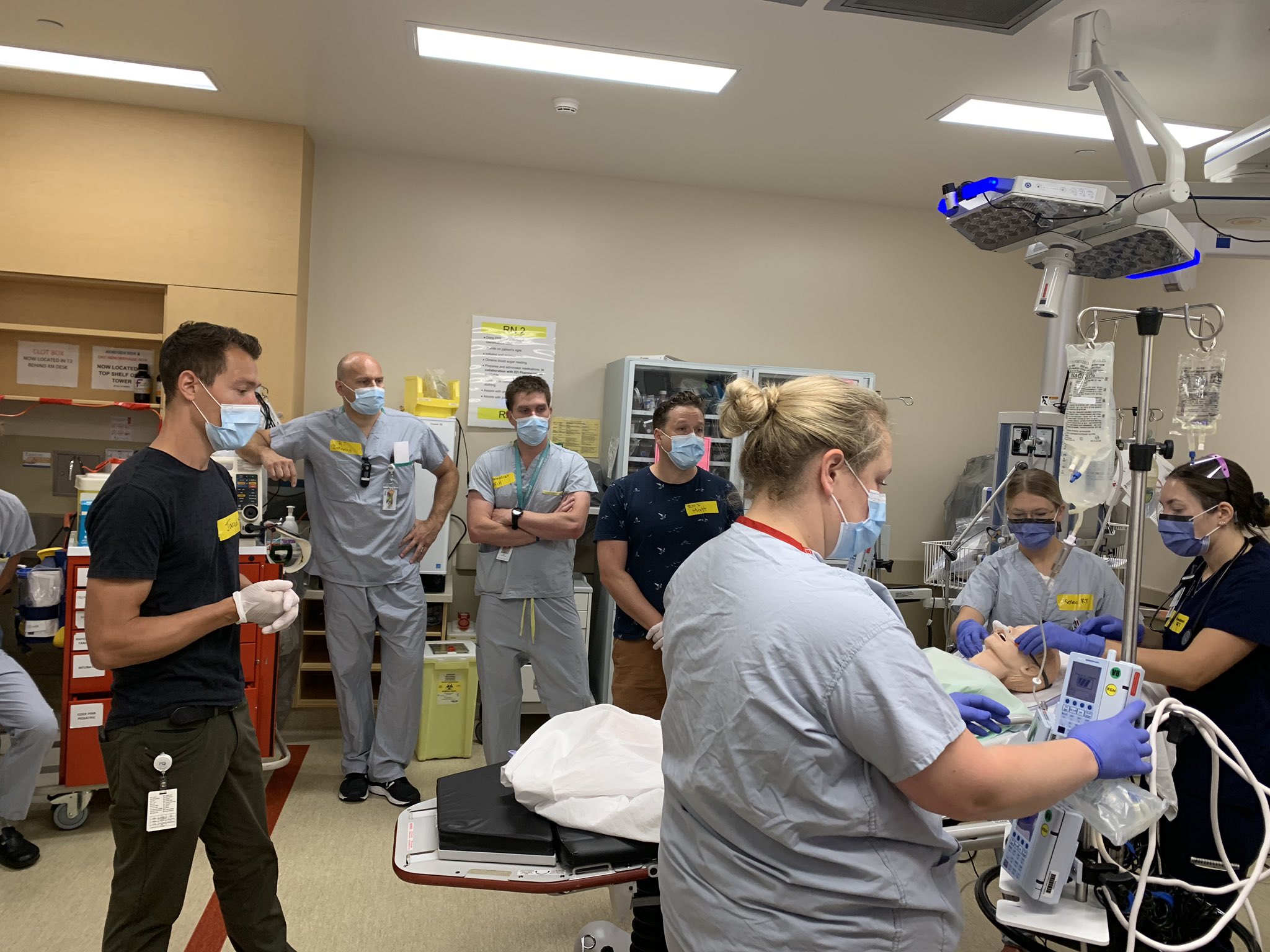
Simulation session in the KGH emergency department. Note: in order to conserve PPE, the team pictured here is wearing PPE appropriate for simulation but not bedside patient care.
Training protocols support learning and build confidence for front-line staff
In the early stages of the COVID-19 pandemic, physicians and allied health professionals in BC and across the country ramped up patient simulation training to prepare for the impending health care crisis.
Research from the Southern Medical Program (SMP) based at UBC Okanagan is highlighting a new pandemic simulation guide as a critical resource for helping the provincial health care system stay up to date.
Patient simulation serves an integral tool to support and test a health care system's emergency preparedness for multiple scenarios including a pandemic. However, ready access to equipment, space and resources varies greatly by community especially those situated in rural and remote settings.
As cases of COVID-19 started appearing across BC, Dr. Jared Baylis and the Interior Health simulation team fielded an urgent and heightened number of requests for simulation training as hospitals and communities grappled with how to safely treat an influx of sick and contagious patients.
"The stakes were high as health care teams looked to simulation to help effectively manage COVID-19 patients and ensure the safety of front-line staff," says Baylis, an emergency medicine physician and simulation lead with the SMP and Interior Health (IH).
In response, Baylis and the IH simulation team worked rapidly to develop a standardized set of protocols that could support the safe delivery of simulation exercises regardless of the environment. In rural hospitals and clinics where space is often limited or unavailable, training must be conducted on the wards or in other clinical spaces such as operating rooms.
The COVID-19 Simulation Guide gives simulation educators, from novice to expert, the tools and resources to facilitate training that allow participants to feel safe, learn from the sessions and prepare to confidently handle COVID-19 cases within their unique clinical environments.
"We want to ensure exercises are productive, respect physical distance measures, and optimize the use of personal protective equipment," adds Baylis. "Our hope is to build capacity for COVID-19 training across BC, particularly within rural areas that lack access to dedicated simulation resources."
A recent study by fourth-year SMP student Hilary Drake highlighted the guide's impact and broad use within the health care community in BC and beyond. The guide is available to download for free from the BC Simulation Network website.
"The guide has enabled health care professionals with little to no simulation experience conduct successful COVID-19 simulation sessions," says Drake. "It has supported learning from across the continuum of care from emergency departments and intensive care units to long-term care facilities and primary care settings."
The study was recently published in the Journal of the Society for Simulation in Healthcare.
About UBC's Okanagan campus
UBC's Okanagan campus is an innovative hub for research and learning founded in 2005 in partnership with local Indigenous peoples, the Syilx Okanagan Nation, in whose territory the campus resides. As part of UBC-ranked among the world's top 20 public universities-the Okanagan campus combines a globally recognized UBC education with a tight-knit and entrepreneurial community that welcomes students and faculty from around the world in British Columbia's stunning Okanagan Valley.






